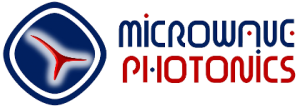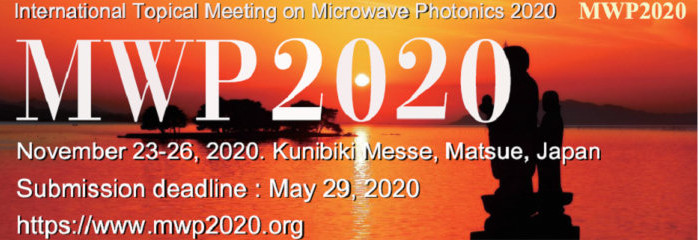Microwave Photonics GmbH (MWP) CEO, Dr. Andreas Stöhr, will deliver a keynote speech at the upcoming IEEE International Topical Meeting on Microwave Photonics 2020 in Matsue, Japan. In his keynote address, Dr. Stöhr will review latest achievements in integrated microwave photonics for millimeter-wave and terahertz systems.
Recent advances in hybrid integration have fueled the development of novel microwave photonic technologies and their utilization in modern applications. Dr. Stöhr will review the recent advances in hybrid integration technologies for microwave photonics. The keynote address will provide an insight in the development of advanced integrated microwave photonic sources and detectors for high-frequency operation. Thanks to advances in hybrid integration, it is now possible to combine different materials. This allows us to exploit their unique features for microwave photonic applications. For example, direct bandgap semiconductors such as InP are the material base for many photonic and electronic components. This includes lasers, high-frequency photodiodes, and photomixers. The later ones are used to generate and detect radio-frequency (RF) signals in the microwave to terahertz regime. Today, we can integrate such InP-based photodiodes and photomixers with other materials such as SiN or high-frequency ceramic laminates. This allows us to combine the high-frequency performance of our InP chips with the ultra-low optical transmission loss performance of SiN. Based on this hybrid integration approach, we can now build antenna-integrated photodiode arrays of high output power operation. Moreover, by integrating InP photodiode arrays with SiN-based optical phase shifter or optical true time delays, we can also build steerable photonic transmitter. These chips allow to modify the direction of the generated RF beams by optical means. Such chips are important for beam-squint-free steerable antennas. Moreover, they open up a path towards beam steering for RF signals at much higher frequencies even in the terahertz range. The talk will present first hybrid integrated microwave photonic beam-steering antenna chips operating at 0.3 THz.
Besides the review of the recent technological achievements, the talk will also address the benefits that these advanced hybrid integrated microwave photonic chips will have for several modern applications. For example, the ability of ultra-wideband operation allows to transmit very high data rates wirelessly. Dr. Stöhr will report recent achievements demonstrating record data rates reaching 100 Gbit/s for the 60 GHz ISM band. He will also report on wireless communications in the THz regime. But integrated microwave photonic chips for RF beam steering will support also a multitude of other modern mobile applications including imaging, radar, and spectroscopy.
The IEEE International Topical Meeting on Microwave Photonics is the premier international meeting on microwave photonic devices, systems, and applications. The conference provides a forum for the presentation of new advances in the multi-disciplinary research area. Topics are ranging from novel devices to system field trials. Since 1996, the conference is held annually. It rotates between the Americas, the Asia-Pacific region and Europe. In 1997, the first meeting in Europe was held in Duisburg, Germany.

